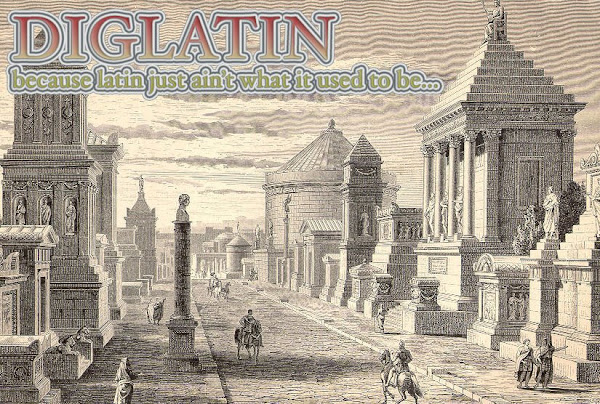I love the Res Gestae. Not only is it a fabulous historical political document, it also serves as a great teaching tool. Couple it with a peculiar feature of Google Docs, and it becomes most helpful in determining where your students are having trouble in translating.
Now, you could of course use any text -- and that's sort of the point. I just happen to be talking about Augustus' last testament here because I recently used it in class and it worked particularly well.
Here's what you do.
1) Open a new Google Doc and invite your students on as contributors.
2) Post the text of the Res Gestae. (A great resource for this and all sorts of texts is The Latin Library).
3) Assign each of your students a color. So, say you had five students, assign them orange, blue, red, green, and brown. Then have them go through the doc and change the color of each paragraph so that starting from the beginning the document will be staggered between each student and each student will get to translate no less than five paragraphs. (One of the things that makes the Res Gestae perfect for this sort of thing is that unlike say the Aeneid, you can really take each section independently and understand what's happening without the prior knowledge of the proceeding sections).
4) Now, the students are required to translate their own chunks of the text. They will be able to see everybody else translating and can ask each other questions should they get stuck. Best of all -- and this is the real innovation here -- you the teacher get to watch in real-time as each student is translating their own sections. You will actually see their thought processes as they are typing -- and you can make suggestions right there in the student's translation as they are working.
5) What I like to do is turn nearly perfect sections dark blue and completed sections black so that students know whether or not they should go back and rework anything.
The major advantage of this approach is two-fold:
1) You are working in real-time on text with multiple students at the same time. It is the closest you can come to cloning yourself and becoming a personal tutor to each student in your class.
2) You get to see exactly how the students work through the process of translating rather than just seeing the end result. You will now know not just that the student misconstrued a section, but you will know more precisely how it happened.
Subscribe to:
Post Comments (Atom)





No comments:
Post a Comment